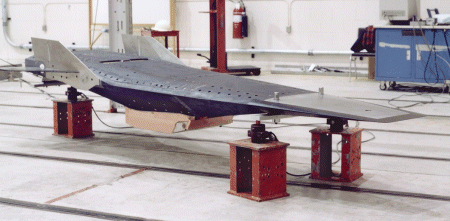The first Hyper-X hypersonic flight research vehicle, the X-43A, is undergoing final systems checks and hydrogen "blowdown" tests at NASA Dryden Flight Research Center, California, in preparation for its first captive carry flight. This is currently scheduled for December.

The captive carry flight, if successful, could pave the way for an attempt to reach speeds up to M7 during the X-43A's initial flight, which could take place as early as January next year.
Programme officials warn, however, that further slippages are likely to the already delayed effort which was originally aimed at a first M7 attempt in January this year.
"We were holding the schedule for May 2000 for a while, but we needed to do more systems checks and we had a number of valve leaks and so on," says NASA, which concedes the programme is running around one year behind schedule.
Despite the hold-ups, NASA says it is not willing to rush the programme, which will attempt to demonstrate the first successful airframe-integrated scramjet (supersonic ramjet)-powered aircraft at hypersonic speeds.
The forebody of the wedge-shaped X-43A, which is only 3.6m (12ft) from nose to tail, is designed to act as an intake for the scramjet, and the aft section is designed to act as an exhaust. The scramjet-powered craft will burn its on-board hydrogen fuel using oxygen taken from the atmosphere.
The initial two X-43As are intended for use in M7 flights, while a third will make an attempt to reach M10. The second vehicle is expected to arrive at Dryden in November from its maker, MicroCraft of Tullahoma, Tennessee. "That could fly in June if all goes well," says NASA, which hopes the third vehicle could make the M10 attempt as early as March 2002. Flight control movements will not be attempted until the second flight, assuming the initial flight is a success.
The vehicles will be launched by NASA's Boeing B-52B and boosted to test condition speeds of M7and above by an Orbital Sciences Pegasus rocket. At around 100,000ft (30,000m), the X-43A will detach from the booster and fly under its own power on a pre-programmed flight pattern. Tests will be conducted off the California coast and all vehicles will be ditched in the ocean after the tests.
Source: Flight International























